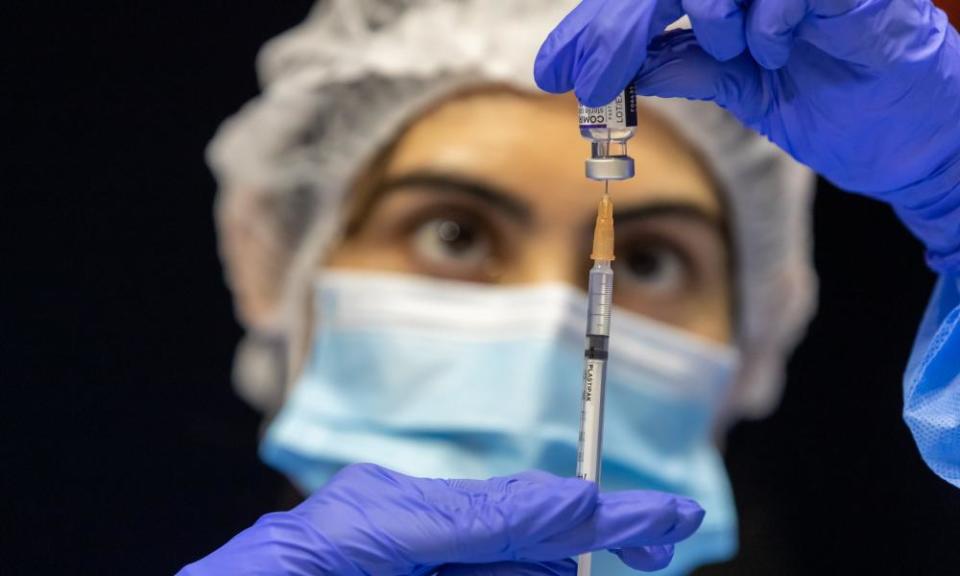Booster shots may be needed to keep fully vaccinated status in Australia in future

Senate inquiry also hears there are ‘no definite signals’ Omicron more severe than other Covid variants
A booster dose could be necessary to keep your green Covid-19 vaccination tick in the future, the health department secretary Brendan Murphy says.
Booster shots are being rolled out across Australia amid warnings that immunisation from the initial vaccinations wanes with time.
The federal government distinguishes these “booster” doses from the third vaccine dose some immunocompromised people need to get a standard level of protection.
Related: Moderna or Novavax after AstraZeneca jab confers high Covid immunity, study finds
In a Senate select committee inquiry into the government’s handling of the Covid pandemic on Tuesday, Labor senator Katy Gallagher asked what would constitute “fully vaccinated” in the future.
Murphy said, for now, any third dose would be recorded and those with two doses would retain their tick – but that could change.
He said the Australian Technical Advisory Group on Immunisation (Atagi) has so far “felt there’s not sufficient evidence to say that someone who’s had two doses needs a third to maintain their fully vaccinated status”.
“So at the moment we’re regarding everyone with two doses as fully vaccinated,” he said.
“If in the future the data suggests that immunity from the primary course wanes so much that people do really need a third dose, that could change.”
Much of Tuesday’s hearing was taken up with discussing misinformation being spread about Covid, the vaccines, and the extension of the rollout to children.
It also heard that there were now 37 cases of the Omicron variant in Australia. The chief medical officer, Prof Paul Kelly, has confirmed only 10 of those cases were associated with overseas travel.
None of them had a severe illness or had been hospitalised, he said, except for one child who was under observation.
There were “no definite signals” that Omicron is more severe than other variants, Kelly said.
He also said that, as the pandemic continues and new variants emerge, they would run out of Greek alphabet letters to name them after, and would turn to stars and constellations instead.
Related: Vaccinating children five to 11: when will they be eligible for Pfizer, and is it safe?
In June the World Health Organization started the naming convention with the Greek alphabet to avoid stigmatising countries in which variants were found. There are still nine letters left.
Lt Gen John Frewen, the head of Australia’s vaccine rollout, said there would be no issues with supply when it came to booster shots as more people become eligible for them – six months after their second dose.
He also defended a wastage rate increase, with 4.32% of vaccines now being wasted compared to 1.2% earlier in the rollout.
Frewen said that was often because when vaccines were scarce doctors would wait until they had enough patients before opening a multi-dose vial, whereas now they would open them for anyone who wanted one, and the remainder then has to be discarded.
He said there was still a vaccination gap between Indigenous and non-Indigenous Australians of about 15%. That gap varies between states and communities but overall Indigenous Australians are disproportionately forced to live with Covid, a Guardian Australia investigation found.

 Yahoo Finance
Yahoo Finance 